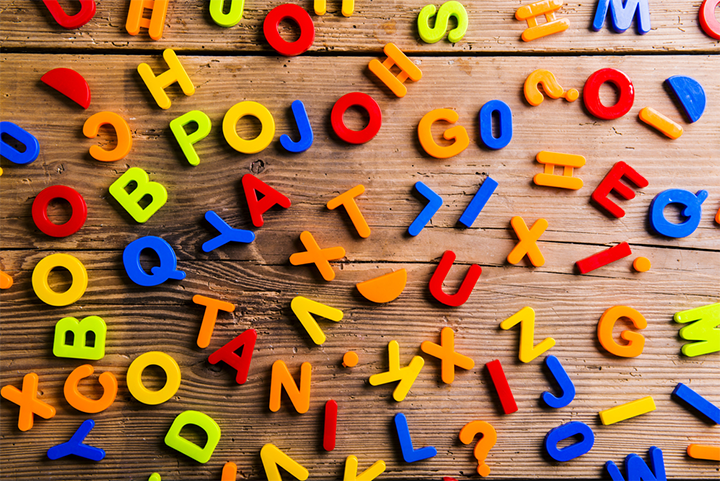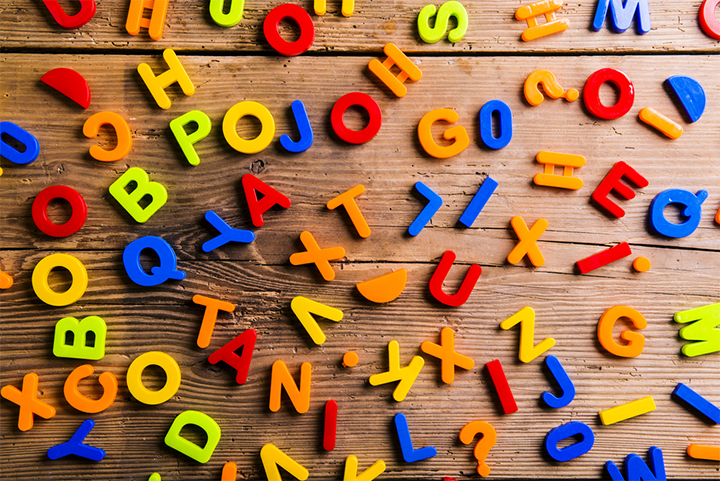If you’re interested in some quick and fun ways to teach rhyming words for kids, you’re in the right place. And if you’re not sure how powerful rhyming can be, just think about the impact of children’s books like Chicka Chicka Boom Boom and Goodnight Moon.
Besides the fact that they are incredibly fun to read, have great rhythm, and teach us all a thing or two about some of life’s lessons, these types of books are also easy to remember thanks to the use of rhyming.
Although rhymes seem like fun and games, they actually play an important role in language development.
In this article, we’ll explore everything you need to know about how to help your child develop this essential language skill. But first, let’s talk a bit more about why rhyming is beneficial.
Why Does Your Child Need To Learn How To Rhyme?

1) Better Information Retention
One of the benefits of rhymes is that they help children (and adults) retain information more quickly and easily.
Think about some of the common rhymes you may have learned as a child to help you remember important tidbits, such as “I before E except after C” and “30 days hath September, April, June, and November…”
2) Reading And Writing Benefits
If your child learns how to spell the word “fun,” it’s much easier for them to spell “run” correctly. Rhyming helps them pick up on patterns and word families, which can benefit them as they learn to read and write.
3) Phonological Awareness Development
Phonological awareness helps children identify and manipulate individual sounds in words. For instance, a child with phonological awareness will understand that the “all” sound in “ball” is the same “all” sound in mall, tall, hall, wall, etc.
Rhyming is one of the activities that can help develop this skill.
4) A Fun Way To Play With Language
Learning shouldn’t be boring, especially if you want to capture and hold your child’s attention. So, how do you bring some fun into it?
Rhyming words for kids can be an exciting way to do just that! When rhyming, your child is likely to engage more and, in the process, develop a playful relationship with language.
5) Cultural Literacy
Classic nursery rhymes and classic rhyming songs are a part of our culture.
The more your child is exposed to them, the more comfortable they’ll be when they come across other literature in the future with references to familiar rhymes like “Hickory Dickory Dock” or “The Itsy Bitsy Spider.”
The Three Stages Of Rhyming
Like most language development skills, rhyming takes time to develop. While you’re on this journey, your child will go through the following stages.
1) Hearing Rhymes
Naturally, the first stage of rhyming is repeatedly hearing rhymes. Your child can’t learn this skill if they aren’t exposed to rhymes.
This exposure can be through songs, nursery rhymes, poems, and children’s books. It helps to occasionally point out any rhyming words to your child as you come across them at this stage.
2) Recognizing Rhymes
The more your child is exposed to rhyming words for kids through the songs or the books you read to them, the easier it will be for them to begin recognizing rhymes.
When your child starts pointing out which words rhyme in a song or book, they have reached the stage of rhyme recognition.
3) Creating Rhymes
So, you’ve been singing and reading to your child. You’ve helped expose them to different rhymes, and they have also started to recognize them.
The next stage is your child creating their own rhymes!
This is a delightful time, when you might get to see your child’s creativity as they try to use their knowledge and understanding of rhymes to produce their own.
Don’t be surprised if they ask you questions like, “Do you know what rhymes with bug? Rug!” They may even add a nonsense word to the list, such as “grug.”
We encourage you to go with it and make up some rhyming nonsense words of your own to have a little fun with your child!
Why Might A Child Have Trouble With Rhyming?
1) They Haven’t Yet Developed Phonological Awareness
Phonological awareness is an umbrella term that includes the development of segmentation, rhyming, and blending syllables.
Some kids pick this important skill up easily, while others may need a little more practice to get the hang of it.
2) They Might Be Confused About Which Words Need To Rhyme
In some books, the words that rhyme are at the end of consecutive lines. But sometimes alternating lines rhyme. And other times, the rhymes are at the beginning of a sentence, not the end.
All of this inconsistency in rhyming patterns can be confusing to a child who is trying to learn this skill.
3) They Might Have Trouble Focusing
For any child to learn rhyming words for kids, they need to be able to focus on the activity so they can pick up on the different sounds and rhythmic patterns.
If your child quickly loses interest in the activity you’re doing together, they might not hear you when you highlight that “look” rhymes with “book.”
Helping Your Child Develop Their Rhyming Skills
The above are some of the common reasons why your child may not have quite mastered rhyming just yet. But now that you understand the importance of rhyming, how can you help them acquire this skill?
1) Recite Nursery Rhymes
Nursery rhymes are not just for babies! They can actually play an essential role in young children’s language development. That’s because they highlight rhyming words so beautifully.
A fun activity to enhance learning during nursery rhymes is to play fill in the blank. Simply recite a nursery rhyme out loud and leave your child to fill in the last word.
For example, “Humpty Dumpty sat on a wall. Humpty Dumpty had a great…”
2) Sing Songs That Rhyme
Your child’s engagement with rhyming words makes singing songs a powerful way to learn about rhymes. They are producing rhymes and priming themselves to understand how rhyming words work.
As we’ve mentioned, the more children are exposed to rhymes in different forms, the easier it will be for them to fully grasp the concept of rhyming. Noticing rhymes in your day-to-day activities is a great way to accomplish that!
3) Read Poetry
Poems are a wonderful way to engage in rhyming words for kids. This is also an opportunity to expose your child to different and diverse literature.
For instance, Lucille Clifton, Nikki Grimes, and Nikki Giovanni are some African American poets who’ve written incredible poetry for kids.
There are also many children’s books that you can choose from, such as the “Llama Llama” books. The idea here is to continue exposing your child to different forms of rhymes.
4) Play Rhyming Word Games
There are plenty of ways to help your child learn to rhyme while having fun!
For instance, you can use refrigerator magnets to spell out a word ending -at. Your child now needs to place letters at the beginning to create words that rhyme (cat, hat, bat, mat, etc.).
We recommend challenging your child to come up with as many as they can — with your help if needed, of course!
5) Rhyme With Images
Visual images are often an aid to learning and can help summarize chunks of information into smaller, easier to process content.
You can take advantage of this by using picture books and asking your child to find things that rhyme on a page.
Additionally, you may want to incorporate this idea outside of storytime. For example, you could say, “I see something we sit on that rhymes with ouch” (couch).
Books With Rhyming Words For Kids
We’ve already mentioned a few authors who have created some incredible children’s books that rhyme. Here are few other popular options that your little one can also enjoy:
- There’s A Wocket In My Pocket!
- Here’s A Little Poem
- Llama Llama Red Pajama
- Is Your Mama a Llama
- Madeline
- Rhyme Crime
- Baby Boo, I Love You
- I See The Moon: Rhymes For Bedtime
- Giggly Wiggly: Playtime Rhymes
- When We Were Very Young
For more ideas, check out our collection of nursery rhymes here!
It’s Time To Rhyme With Rhyming Words For Kids
Rhyming words for kids are a fun and creative way to lay a solid foundation for literacy.
So, remember to continue reading children’s literature and reciting all the fun nursery rhymes you can think of. As your child gets more comfortable with the rules, don’t be surprised when they start creating their own unique rhymes!
To help your young learner develop other important skills, you can also check out Homer’s Learn & Grow App, which helps kids develop their reading, creativity, thinking skills, and so much more.
,


